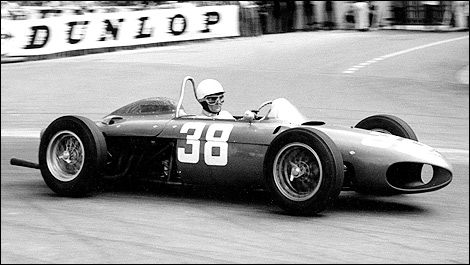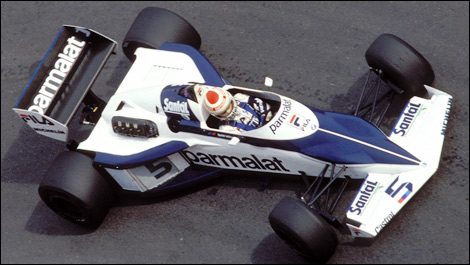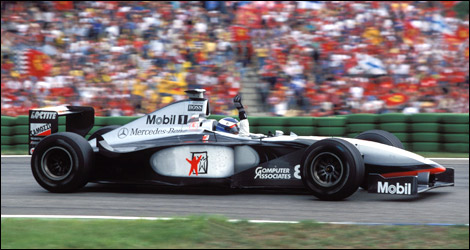Dec
10th
Stay connected Subscribe to our RSS feed
All Formula 1 fans are asking the same question: Will such a major technical change like the introduction of the V6 power units in 2014 put an end to Red Bull Racing's domination in Grand Prix racing?
To provide our readers with a realistic answer, we looked at the statistics of the 64 years of F1 and looked at what happened to the running order when a major technological change was introduced.
1961
Reduction in engine capacity from 2.5L (no compressor) to 1.3 to 1.5L.
1960 Champion: Jack Brabham, Cooper Climax
1961 Champion: Phil Hill, Ferrari
1966
Increase in engine capacity from 1.5L to 3.0L (normally aspirated)
1965 Champion: Jim Clark, Lotus Climax
1966 Champion: Jack Brabham, Brabham Repco
1983
Ban on ground effect, full size sidepods and skirts
1982 Champion: Keke Rosberg, Williams Ford (Rosberg scored only one win while 10 drivers scored the other 15 victories)
1983 Champion: Nelson Piquet, Brabham BMW
1989
Ban on turbo engines, back to normally aspirated motors
1988 Champion: Ayrton Senna, McLaren Honda
1989 Champion: Alain Prost, McLaren Honda
1994
Ban on all driving aids (active suspension, ABS, traction control, etc.)
1993 Champion: Alain Prost, Williams Renault
1994 Champion: Michael Schumacher, Benetton Ford
1998
Introduction of the narrow tracks and grooved tires
1997 Champion: Jacques Villeneuve, Williams Renault
1998 Champion: Mika Hakkinen, McLaren Mercedes
2006
Introduction of normally aspirated 2.4L V8 engines
2005 Champion: Fernando Alonso, Renault
2006 Champion: Fernando Alonso, Renault
Out of the seven examples illustrated here, five showed a significant change in the running order while the other two did not produce an effect.
From these statistics, we can predict (but cannot guarantee!) that the introduction of the new V6 turbo hybrid engines may well put an end of Red Bull Racing's and Sebastian Vettel's domination. Wait and see!
To provide our readers with a realistic answer, we looked at the statistics of the 64 years of F1 and looked at what happened to the running order when a major technological change was introduced.
1961
Reduction in engine capacity from 2.5L (no compressor) to 1.3 to 1.5L.
1960 Champion: Jack Brabham, Cooper Climax
1961 Champion: Phil Hill, Ferrari
 |
| Phil Hill, Ferrari, Monaco, 1961. (Photo: WRi2) |
1966
Increase in engine capacity from 1.5L to 3.0L (normally aspirated)
1965 Champion: Jim Clark, Lotus Climax
1966 Champion: Jack Brabham, Brabham Repco
1983
Ban on ground effect, full size sidepods and skirts
1982 Champion: Keke Rosberg, Williams Ford (Rosberg scored only one win while 10 drivers scored the other 15 victories)
1983 Champion: Nelson Piquet, Brabham BMW
 |
| Nelson Piquet, Brabham-BMW, 1983. (Photo: WRi2) |
1989
Ban on turbo engines, back to normally aspirated motors
1988 Champion: Ayrton Senna, McLaren Honda
1989 Champion: Alain Prost, McLaren Honda
1994
Ban on all driving aids (active suspension, ABS, traction control, etc.)
1993 Champion: Alain Prost, Williams Renault
1994 Champion: Michael Schumacher, Benetton Ford
1998
Introduction of the narrow tracks and grooved tires
1997 Champion: Jacques Villeneuve, Williams Renault
1998 Champion: Mika Hakkinen, McLaren Mercedes
 |
| Mika Hakkinen, McLaren-Mercedes, 1988. (Photo: WRi2) |
2006
Introduction of normally aspirated 2.4L V8 engines
2005 Champion: Fernando Alonso, Renault
2006 Champion: Fernando Alonso, Renault
Out of the seven examples illustrated here, five showed a significant change in the running order while the other two did not produce an effect.
From these statistics, we can predict (but cannot guarantee!) that the introduction of the new V6 turbo hybrid engines may well put an end of Red Bull Racing's and Sebastian Vettel's domination. Wait and see!
 The latest auto news, reviews, prices, product and vehicle releases.
The latest auto news, reviews, prices, product and vehicle releases.